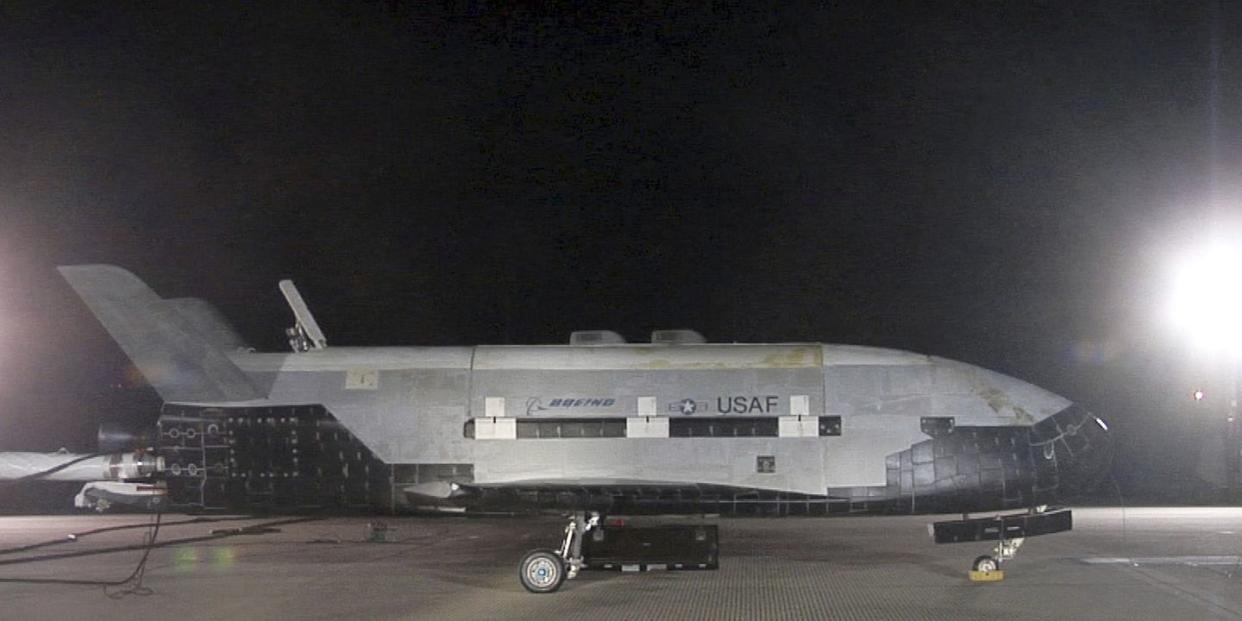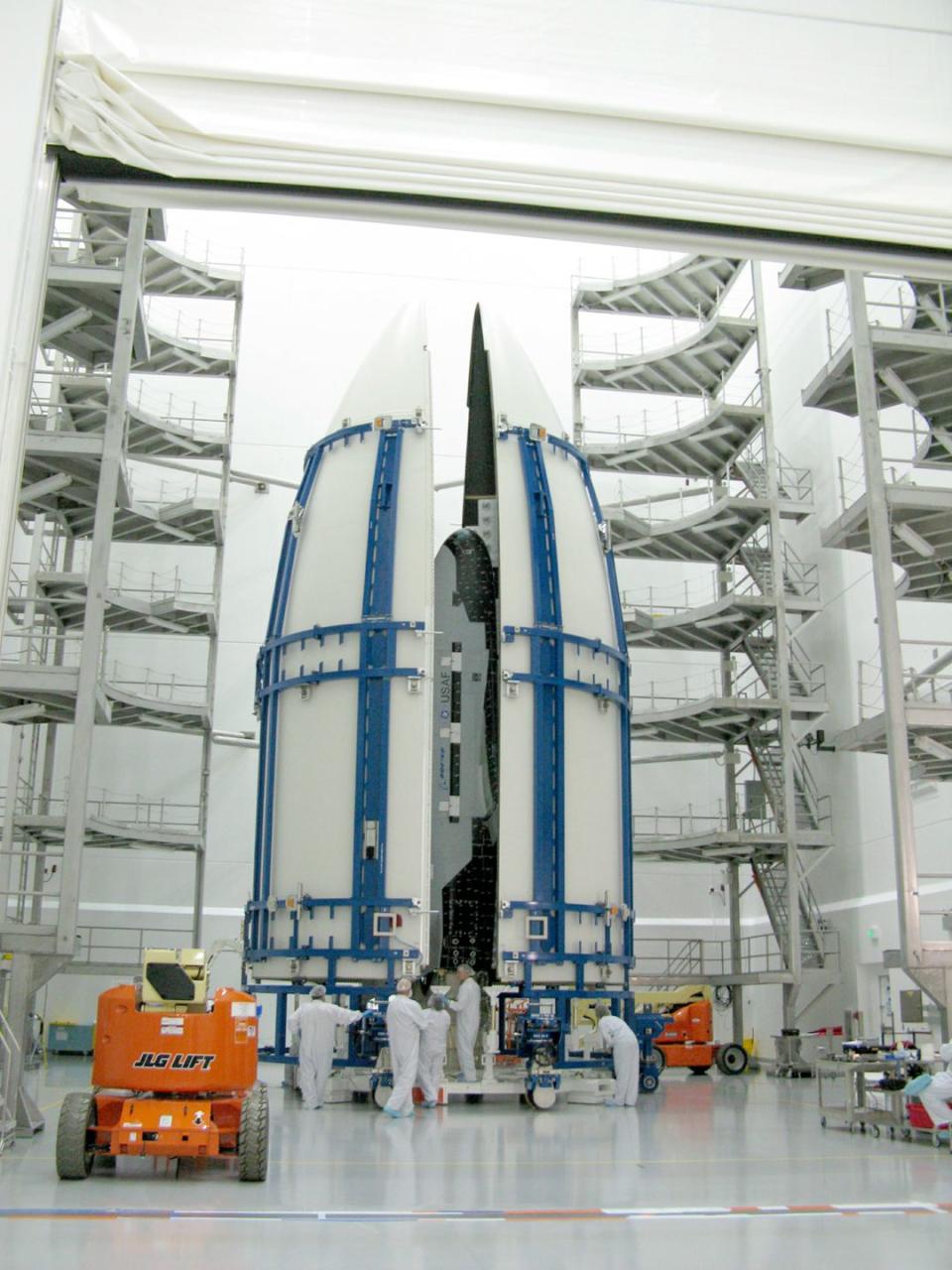Space Photographer Snaps Pictures of Secretive X-37B in Orbit

A Dutch astronomer has snapped the first pictures of the X-37B space plane in orbit. The secretive space plane, in orbit since September 2017, had remained undetected in low earth orbit, conducting experiments on behalf of the Air Force Research Lab. The X-37B shuttle, known for remaining in space for months at a time, is nearing its second year in orbit.
Ralf Vandebergh is a Netherlands-based independent science journalist and astronomer. Vandebergh photographs satellites in orbit, posting the images on his blog Spaceflight From the Backyard and on social media. Vandebergh has taken pictures of the International Space Station, cargo satellites, booster rockets, and other spaceflight debris tumbling through orbit. Vandebrgh has even taken pictures of ISS astronauts on spacewalks.
The #OTV5 / #X37B space plane photographed in orbit! Finally an image showing this mini-Space Shuttle which is only a fraction in size of the real Shuttle. https://t.co/r7zqATUpN4 @SPACEdotcom @planet4589 @Marco_Langbroek @Astroguyz @govertschilling @phi48 @Sterne_Weltraum pic.twitter.com/a5RvgnHPFB
— Ralf Vandebergh (@ralfvandebergh) July 3, 2019
Now, the science journalist can claim credit perhaps the toughest shot yet: the U.S. Air Force’s X-37B unmanned space shuttle. According to Vandebergh he first saw the X-37B in May. He looked for it again in June along a path he predicted it would take but the space plane had changed orbit. Vandebergh, along with a network of satellite observers, found again at 54.5° orbit at 356 kilometers (221 miles) altitude and was able to take photographs on June 30th and July 2nd.
The X-37B looks a lot like the Space Shuttle. There are at least two X-37Bs, each built by Boeing. The shuttles are 29 feet long, with a stubby 14 foot wingspan. Maximum takeoff weight, including cargo, is 11,000 pounds. It has a cargo bay approximately 6.8 feet by 3.9 feet wide, about the size of the bed of a pickup truck.
Like the Shuttle, it is boosted into orbit by rocket engines, features a black and white skin made of heat-resistant tiles, is built to haul cargo into orbit, and after completing its mission glides to Earth. The X-37B differs in being unmanned, controlled by 3rd Space Experimentation Squadron at Schriever Air Force Base in Colorado. It’s also considerably smaller and lacks engines to help it get into orbit. OTV-5 was boosted into orbit in 2017 with the use of a SpaceX Falcon 9 rocket.
Vandebergh captured his photos with his satellite photography rig, consisting of a 10-inch F/4,8 aperture Newtonian telescope with an Astrolumina ALccd 5L-11 mono CMOS camera. The photographer tracked the spaceship manually with a 6x30 finderscope. Vanderbergh told Space.com, "It is really a small object, even at only 300 kilometers [186 miles] altitude, so don't expect the detail level of ground-based images of the real space shuttle. We can recognize a bit of the nose, payload bay and tail of this mini-shuttle, with even a sign of some smaller detail.”
The shuttle mission, known as OTV-5, blasted off from the Kennedy Space Center on September 7th, 2017. In April it marked 600 days in space. The previous mission, OTV-4, lasted 717 days.
The pictures are blurry, but as Vandebergh points out, “We can recognize a bit of the nose, Payload Bay and tail of this mini-shuttle with even a sign of some smaller detail.”

The Air Force typically releases few operational details on X-37B missions, and OTV-5 is no exception. The only payload the service has revealed the shuttle is currently carrying is the Advanced Structurally Embedded Thermal Spreader, or ASETS-II. ASETS-II is an Air Force Research Laboratory experiment designed to test experimental electronics and oscillating heat pipes for long term space exposure.
The big question is, does the ASETS-II experiment alone warrant a 600-day-and-counting space flight, or is the X-37B doing something else up there?
X-37B will likely return to Earth before the end of summer, either at Vandenberg Air Force base in California or Florida’s Kennedy Space Center. A new mission, OTV-6, will reportedly launch in December 2019.
('You Might Also Like',)

